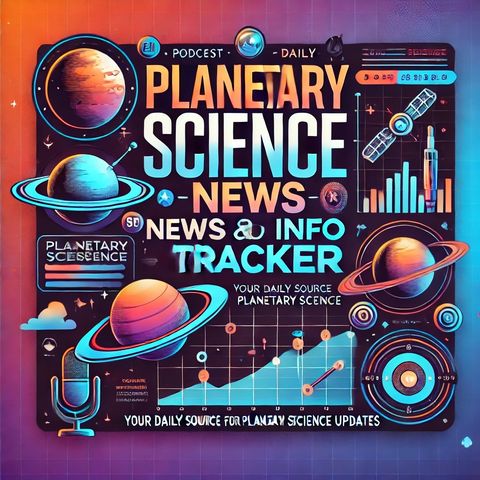Unearth the Eerie Wonders of the Solar System: A Spooky Celestial Halloween Voyage

Descarga y escucha en cualquier lugar
Descarga tus episodios favoritos y disfrútalos, ¡dondequiera que estés! Regístrate o inicia sesión ahora para acceder a la escucha sin conexión.
Unearth the Eerie Wonders of the Solar System: A Spooky Celestial Halloween Voyage
Esta transcripción es generada automáticamente. Ten en cuenta que no se garantiza una precisión absoluta.
Descripción
Every year, as the Halloween season approaches, Earthlings become fascinated by the macabre and the mysterious. But did you know that the Solar System has its own spooky sights and...
mostra másFirst on our list is Mercury’s chaotic terrain, also known as "Weird Terrain," located opposite the massive Caloris Basin. This disordered landscape resembles a world gone awry, with jumbled hills and valleys that form ghostly patterns on the planet's surface. The spooky appearance is a result of seismic waves that were generated by an ancient impact, traveling through the planet and creating an eerie, otherworldly landscape.
Moving on to Mars, this red planet is home to a crater known as "Utopia Planitia." Though not inherently creepy by its sheer existence, the crater gained infamy when Viking 2 landed in this region in 1976 and mysteriously ceased communication. The rocky, desert-like plains under the thin Martian atmosphere create an arid, lonely environment reminiscent of abandoned Halloween ghost towns.
The flattened moons of Saturn are peculiar in their own right, especially Hyperion. This Saturnian satellite is known for its irregular shape and odd tumbling rotation, which make it appear like a ghastly jack-o'-lantern adrift in space. Its sponge-like appearance, marked by deep craters and a dusty surface, adds to its eerie charm, presenting a moon that looks more like a floating gourd than a celestial body.
Jupiter's Great Red Spot fits right into our Halloween theme as a storm large enough to engulf Earth. This swirling vortex resembles a cosmic eye gazing ominously back at us. The storm has been active for at least 350 years, and the mystery of its longevity only adds to its supernatural allure.
Titan, Saturn's largest moon, introduces us to the moving shadows of its methane-filled lakes and seas. The thick, hazy atmosphere reflects the sunlight in peculiar ways, casting shadows that dance across the icy surface. These reflections can play tricks on our eyes, making it seem as if the dark liquid bodies are alive, channeling their own eerie energy.
The asteroid belt between Mars and Jupiter holds a particular treat for fans of spooky stories—the asteroid 31 Euphrosyne. Known for its unusually dark surface, Euphrosyne emits very little light, blending into the blackness of space like a celestial phantom. Its orbit is inclined steeply compared to the rest of the belt, suggesting a past of collisions and chaos.
Finally, no Halloween voyage through the Solar System would be complete without Pluto and its heart-shaped glacier, known as Tombaugh Regio. Discovered by NASA’s New Horizons mission in 2015, this light-colored region stands out against Pluto’s darker surface. The name itself evokes spectral images—cells floated on frozen nitrogen creating otherworldly impressions resembling ancient ghostly visages.
Whether they're tucked away in shadowy craters or spinning erratically through space, these celestial wonders invite us to ponder how much life and color exist in the darkness. This Halloween, let the mysteries of the Solar System’s trickiest terrains and most fascinating features inspire you to find magic in the shadows and wonder in the night sky. From distorted landscapes to haunted shadows, we can find the spirit of Halloween in the vast expanse of space.
Información
| Autor | QP-4 |
| Organización | William Corbin |
| Página web | - |
| Etiquetas |
Copyright 2024 - Spreaker Inc. an iHeartMedia Company
